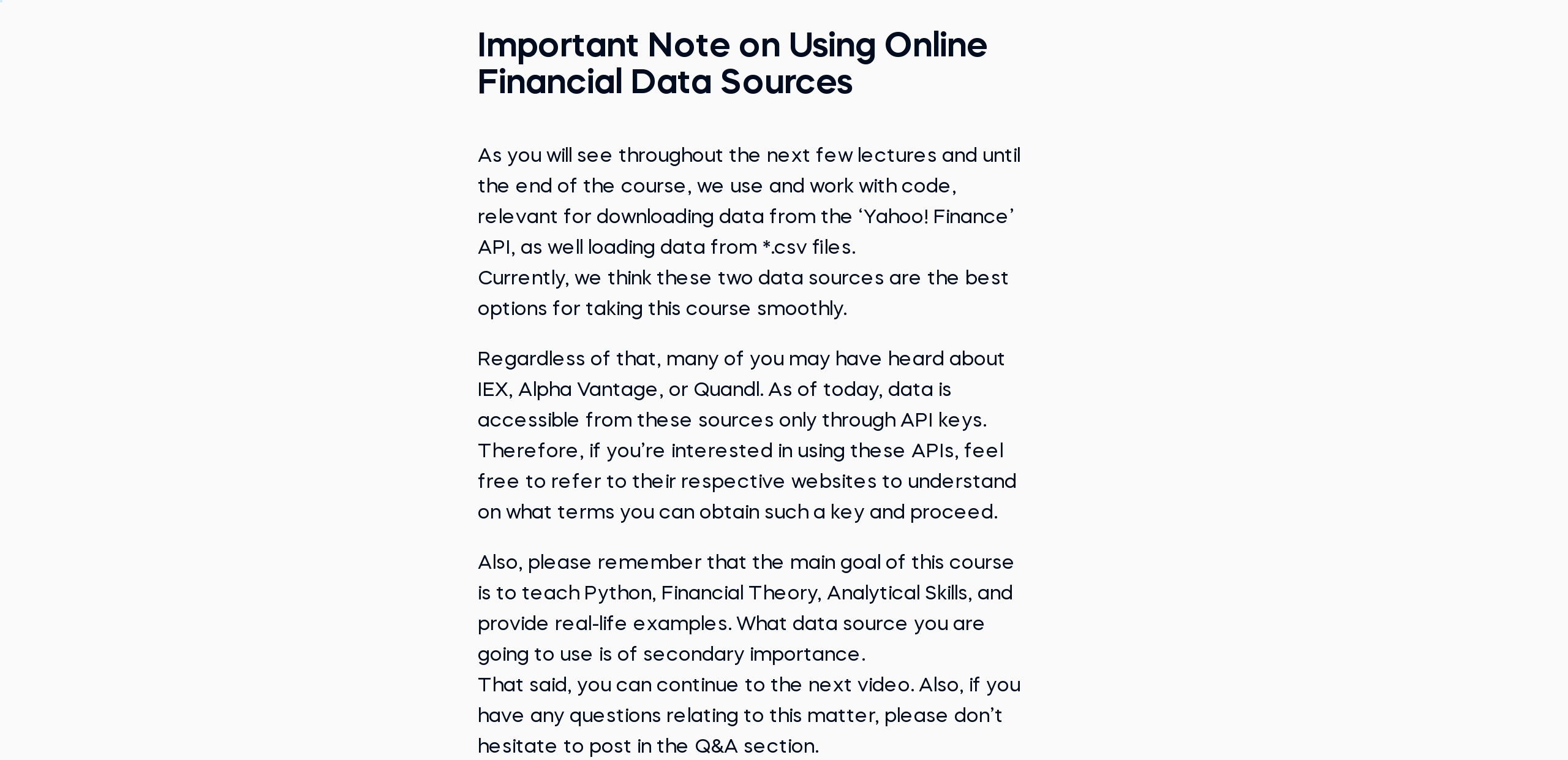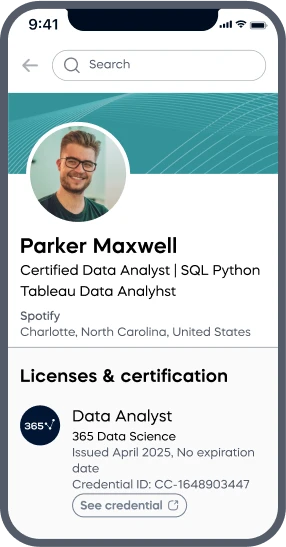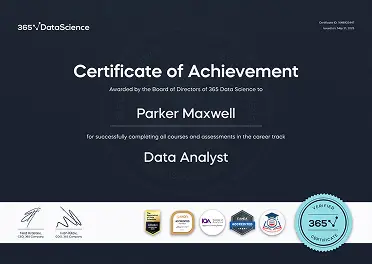Ahmed H.
See all reviews
Blend investment analysis skills with Python programming: Master financial analysis using Python






Skill level:
Duration:
CPE credits:
Accredited

Bringing real-world expertise from leading global companies
Master's degree, Economic and Social Sciences

Bringing real-world expertise from leading global companies
Master's degree, Finance
Description
Curriculum
Free lessons

1.1 Course Introduction
4 min

1.2 Must-Have Packages for Finance and Data Science
5 min

1.3 Working with Arrays
6 min

1.4 Generating Random Numbers
3 min

1.5 Important Note on Using Online Financial Data Sources
1 min

1.6 Using Financial Data in Python
3 min
96%
of our students recommend
9 in 10
people walk away career-ready
$29,000
average salary increase
ACCREDITED certificates
Craft a resume and LinkedIn profile you’re proud of—featuring certificates recognized by leading global
institutions.
Earn CPE-accredited credentials that showcase your dedication, growth, and essential skills—the qualities
employers value most.





Certificates are included with the Self-study learning plan.


How it WORKS